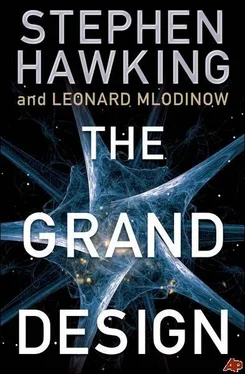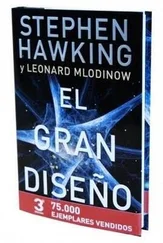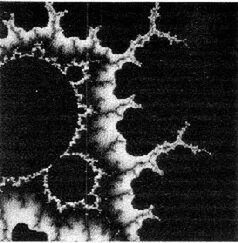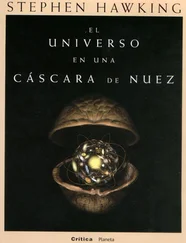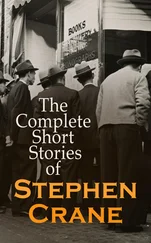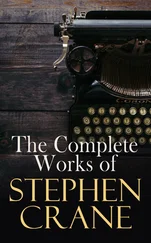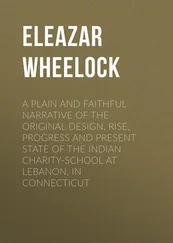You might think that the validity of supersymmetry would be an easy thing to check-just examine the properties of the existing particles and see if they pair up. No such partner particles have been observed. But various calculations that physicists have performed indicate that the partner particles corresponding to the particles we observe ought to be a thousand times as massive as a proton, if not even heavier. That is too heavy for such particles to have been seen in any experiments to date, but there is hope that such particles will eventually be created in the Large Hadron Collider in Geneva.
The idea of supersymmetry was the key to the creation of supergravity, but the concept had actually originated years earlier with theorists studying a fledgling theory called string theory. According to string theory, particles are not points, but patterns of vibration that have length but no height or width-like infinitely thin pieces of string. String theories also lead to infinities, but it is believed that in the right version they will all cancel out. They have another unusual feature: They are consistent only if space-time has ten dimensions, instead of the usual four. Ten dimensions might sound exciting, but they would cause real problems if you forgot where you parked your car. If they are present, why don’t we notice these extra dimensions? According to string theory, they are curved up into a space of very small size. To picture this, imagine a two-dimensional plane. We call the plane two-dimensional because you need two numbers (for instance, horizontal and vertical coordinates) to locate any point on it. Another two-dimensional space is the surface of a straw. To locate a point on that space, you need to know where along the straw’s length the point is, and also where along its circular dimension. But if the straw is very thin, you would get a very good approximate position employing only the coordinate that runs along the straw’s length, so you might ignore the circular dimension. And if the straw were a million-million-million-million-millionth of an inch in diameter, you wouldn’t notice the circular dimension at all. That is the picture string theorists have of the extra dimensions-they are highly curved, or curled, on a scale so small that we don’t see them. In string theory the extra dimensions are curled up into what is called the internal space, as opposed to the three-dimensional space that we experience in everyday life. As we’ll see, these internal states are not just hidden dimensions swept under the rug-they have important physical significance.
In addition to the question of dimensions, string theory suffered from another awkward issue: There appeared to be at least five different theories and millions of ways the extra dimensions could be curled up, which was quite an embarrassment of possibilities for those advocating that string theory was the unique theory of everything. Then, around 1994, people started to discover dualities-that different string theories, and different ways of curling up the extra dimensions, are simply different ways of describing the same phenomena in four dimensions. Moreover, they found that supergravity is also related to the other theories in this way. String theorists are now convinced that the five different string theories and supergravity are just different approximations to a more fundamental theory, each valid in different situations.
That more fundamental theory is called M-theory, as we mentioned earlier. No one seems to know what the “M” stands for, but it may be “master,” “miracle,” or “mystery.” It seems to be all three. People are still trying to decipher the nature of M-theory, but that may not be possible. It could be that the physicist’s traditional expectation of a single theory of nature is untenable, and there exists no single formulation. It might be that to describe the universe, we have to employ different theories in different situations. Each theory may have its own version of reality, but according to model-dependent realism, that is acceptable so long as the theories agree in their predictions whenever they overlap, that is, whenever they can both be applied.
Whether M-theory exists as a single formulation or only as a network, we do know some of its properties. First, M-theory has eleven space-time dimensions, not ten. String theorists had long suspected that the prediction of ten dimensions might have to be adjusted, and recent work showed that one dimension had indeed been overlooked. Also, M-theory can contain not just vibrating strings but also point particles, two-dimensional membranes, three-dimensional blobs, and other objects that are more difficult to picture and occupy even more dimensions of space, up to nine. These objects are called p-branes (where p runs from zero to nine).

What about the enormous number of ways to curl up the tiny dimensions? In M-theory those extra space dimensions cannot be curled up in just any way. The mathematics of the theory restricts the manner in which the dimensions of the internal space can be curled. The exact shape of the internal space determines both the values of physical constants, such as the charge of the electron, and the nature of the interactions between elementary particles. In other words, it determines the apparent laws of nature. We say “apparent” because we mean the laws that we observe in our universe-the laws of the four forces, and the parameters such as mass and charge that characterize the elementary particles. But the more fundamental laws are those of M-theory.
The laws of M-theory therefore allow for different universes with different apparent laws, depending on how the internal space is curled. M-theory has solutions that allow for many different internal spaces, perhaps as many as 10 500, which means it allows for 10 500different universes, each with its own laws. To get an idea how many that is, think about this: If some being could analyze the laws predicted for each of those universes in just one millisecond and had started working on it at the big bang, at present that being would have studied just 10 20of them. And that’s without coffee breaks.
Centuries ago Newton showed that mathematical equations could provide a startlingly accurate description of the way objects interact, both on earth and in the heavens. Scientists were led to believe that the future of the entire universe could be laid out if only we knew the proper theory and had enough computing power. Then came quantum uncertainty, curved space, quarks, strings, and extra dimensions, and the net result of their labor is 10 500universes, each with different laws, only one of which corresponds to the universe as we know it. The original hope of physicists to produce a single theory explaining the apparent laws of our universe as the unique possible consequence of a few simple assumptions may have to be abandoned. Where does that leave us? If M-theory allows for 10 500sets of apparent laws, how did we end up in this universe, with the laws that are apparent to us? And what about those other possible worlds?
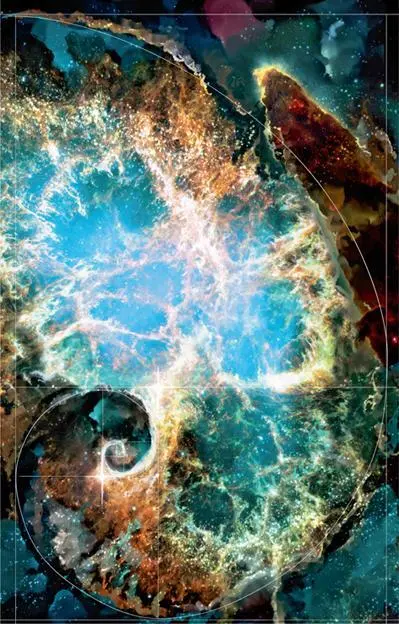
***

ACCORDING TO THE BOSHONGO PEOPLE of central Africa, in the beginning there was only darkness, water, and the great god Bumba. One day Bumba, in pain from a stomachache, vomited up the sun. In time the sun dried up some of the water, leaving land. But Bumba was still in pain, and vomited some more. Up came the moon, the stars, and then some animals: the leopard, the crocodile, the turtle, and finally man. The Mayans of Mexico and Central America tell of a similar time before creation when all that existed were the sea, the sky, and the Maker. In the Mayan legend the Maker, unhappy because there was no one to praise him, created the earth, mountains, trees, and most animals. But the animals could not speak, and so he decided to create humans. First he made them of mud and earth, but they only spoke nonsense. He let them dissolve away and tried again, this time fashioning people from wood. Those people were dull. He decided to destroy them, but they escaped into the forest, sustaining damage along the way that altered them slightly, creating what we today know as monkeys. After that fiasco, the Maker finally came upon a formula that worked, and constructed the first humans from white and yellow corn. Today we make ethanol from corn, but so far haven’t matched the Maker’s feat of constructing the people who drink it.
Читать дальше
